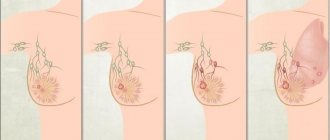Pancreatic cancer accounts for 7% of all cancer deaths. Difficult to diagnose at an early stage, oncological disease develops in the form of a malignant formation from the cells lining the ducts of the glands. The disease rarely occurs in men and women, and in persons under 40 years of age. In most cases, the pathology is diagnosed in people after 75 years of age. This fact is explained by the fact that in older people there is a deterioration in the functioning of antitumor defense mechanisms, disruption of the process of cell division and accumulation of all kinds of mutations. Men, according to statistics, get sick more often.
Since there are no obvious manifestations, patients seek medical help in the later stages, which significantly complicates treatment and worsens the prognosis.
The answer to the question of whether pancreatic cancer is suspected, how long people live with this disease, depends on many factors, so only doctors can give the answer after a thorough examination.
Classification
The first symptoms of the disease are difficult to notice. The choice of treatment depends on the type of cancer classified by stage. The stages of the disease are determined in patients after examination.
According to the TNM classification, the following stages are distinguished:
- the disease is localized, there are no lesions of the lymph nodes and internal organs - stage zero;
- the tumor has increased in size, but there are no lesions of nearby lymph nodes and organs - 1A and 1B;
- the tumor has spread beyond the organ, internal organs and lymph nodes are not affected - stage 2A. If internal organs and lymph nodes are affected - stage 2B;
- internal organs and lymph nodes are affected, cancer cells are present in the vessels – 3;
- disease with metastases in the abdominal organs – 4.
Stages of the disease
The stage of cancer is determined after all necessary studies have been carried out. To determine the stage of pancreatic cancer, it is necessary to know the size of the malignant tumor, the degree of damage to nearby organs and lymph nodes, as well as the presence of distant metastases.
As with other oncological diseases, a universal TNM coding system is used:
- where T is an assessment of the tumor itself, its size and extent;
- N – designation of damage to nearby lymph nodes;
- M – presence or absence of distant metastases.
Based on the types of cells that form tumors, there are:
- adenocarcinoma (the most common type, occurs in 4 out of 5 cases);
- cystadenocarcinoma;
- squamous cell carcinoma;
- acinar cell carcinoma;
- undifferentiated cancer;
- other types of cancer (no more than 5%) – carcinoids, insulinomas and neuroendocrine pancreatic cancer.
Pancreatic cancer stage 3
: the prognosis is unfavorable. Although there are no distant metastases yet, the primary tumor reaches a significant size and grows into the mesenteric artery and the celiac trunk (the celiac trunk is a large, short blood vessel from which the gastric arteries, common hepatic artery, and splenic artery branch). Surgical removal of such a formation is extremely difficult.
Pancreatic cancer stage 4
— the diagnosis is made in the presence of distant metastases (1 or more; coded M1), while the size of the tumor and the degree of its invasion into neighboring organs can be any. The probability of recurrence after removal of metastases is high (80% within the next 5 years).
When diagnosing a tumor, a decision on treatment should be made as quickly as possible, since pancreas cancer develops rapidly.
Varieties
Oncologists distinguish two main types of pathology:
- exocrine form;
- endocrine form.
Depending on where the malignant tumor was localized, according to the examination, patients may be diagnosed with:
- head cancer, during which jaundice and skin itching develop;
- tail cancer;
- carcinoma of the gland body.
If you are concerned about the pancreas, the signs of cancer of the body of the gland and tail are in many ways similar to the manifestations of diabetes mellitus and chronic pancreatitis. With cancer of the body and tail, blood flow through the splenic vein is disrupted, as a result of which varicose veins of the stomach and esophagus are observed, and gastrointestinal bleeding develops.
The first symptoms do not allow one to accurately determine the location of the formation without examination using modern diagnostic equipment.
Causes
Experts in the field of oncology name several factors, the presence of which increases the likelihood of developing a malignant neoplasm:
- various diseases of the pancreas (including chronic pancreatitis);
- pathologies of the biliary tract;
- the presence of genetic abnormalities (Lynch syndrome, atypical melanoma, etc.) or poor heredity;
- diabetes;
- stomach ulcer;
- obesity or malnutrition;
- smoking;
- age.
Quite often, patients mistake the first symptoms of pancreatic cancer for diseases of the gastrointestinal tract or stomach due to similar symptoms. The first manifestations of pancreatic cancer are unclear and do not directly indicate this pathology. It refers to diseases whose exact causes have not yet been established.
GASTRINOMA
Clinical manifestations. The disease is characterized by the original Zollinger-Ellison triad: peptic ulcers with atypical localization and a fulminant, aggressive course, extreme hypersecretion of gastric contents and the presence of a non-P islet cell tumor of the pancreas. It can begin as a simple disease and end with the appearance of severe complications (perforation, obstruction, bleeding, refractoriness to therapy). Standard medical and surgical treatment is ineffective. There are cases accompanied by significant diarrhea and steatorrhea.
Diagnostics. Manifestations typical of gastrinoma include high basal secretion rates of VAO/MAO (= or >0.6), hypertrophied gastric mucosal folds, fasting hypergastrinemia (>200 pg/ml) or paroxysmal increase in gastrin levels in response to secretin administration, imaging pancreatic tumor using CT.
Pathology and pathophysiology. Gastrinomas are non-β islet cell tumors of the pancreas that range in size from 2 to 10 mm. There is varying evidence in the literature regarding the malignant potential of gastrinomas, although rates equal to or greater than 90% have been reported. The presence of gastrinomas in the wall of the duodenum is observed. Neoplasms grow slowly and metastasize late; The cause of death is often peptic ulcer disease. Cases of gastrinomas have been described as manifestations of MEA-1 syndrome (Wermer's triad: pituitary gland, parathyroid glands, pancreas), in which the tumors are distinguished by the fact that they are multiple and benign.
Treatment. The original treatment method is gastrectomy. However, the use of histamine H2 receptor blockers and omeprazole with or without proximal selective vagotomy can control the condition of patients with disease that cannot be resected.
Symptoms and signs
The disease usually begins asymptomatically. First symptoms:
- pain in the left hypochondrium and “in the pit of the stomach”;
- feeling of heaviness in the stomach;
- weight loss;
- weakness;
- severe fatigue;
- loss of appetite.
As the disease progresses, the symptoms of pancreatic cancer intensify, manifesting themselves:
- severe skin itching;
- nausea, vomiting, diarrhea;
- jaundice;
- general exhaustion;
- the appearance of blood clots;
- meat intolerance.
The early stage is the stage at which treatment gives the highest percentage of survival. Signs of pancreatic cancer can also be expressed by pain in the upper abdomen, radiating to the back. Symptoms in women often include hypovitaminosis and severe weight loss due to gas and diarrhea.
In 25-50% of patients, pancreatic cancer causes diabetes mellitus, accompanied by symptoms of hyperglycemia.
Pancreatic cancer - ICD codes
To translate the verbal expression of diagnoses given to patients, the international classification ICD 10 is used. According to this classification, pancreatic cancer IMD has code C25.
The alphanumeric code facilitates the process of storing, searching and analyzing information.
When to see a doctor
Symptoms of pancreatic cancer depend on how much of the pancreatic tissue is involved. You should immediately consult an oncologist for medical help if you have the following symptoms:
- the appearance of a tendency to thrombosis;
- dark urine and light feces;
- jaundice;
- abdominal and back pain;
- sudden weight loss;
- loss of interest in food;
- fatigue and general weakness.
Symptoms of pancreatic cancer with liver metastases are as follows:
- feeling of a full stomach with small amounts of food;
- skin itching;
- pain in the right hypochondrium.
Pancreatic cancer is one of the diseases for which treatment is most successful when treated early. If these symptoms occur, you should immediately contact a qualified oncologist for examination and treatment.
OTHER ISLE CELL TUMORS
Lipomas can cause diarrhea, “pancreatic cholera”, WDHA syndrome (water diarrhea, hypokalemia, achlorhydria), 50% of them are malignant. Glkzagonoma is characterized by skin lesions (necrolytic erythema migrans), diabetes, glossitis, anemia, weight loss, depression and venous thrombosis; 75% of glucagon are classified as malignant tumors. The best treatment is resection. Clinical manifestations of somatostatin include diabetes, diarrhea, steatorrhea, achlorhydria, gallstones, malabsorption and abdominal pain. All of these symptoms are attributed to excess somatostatin levels. Streptozocin, dacarbazine, and doxorubicin are most often used in treatment.
Consultation on paid services
Show phone numbers
Diagnostics
Pancreatic cancer is difficult to diagnose in the early stages. During the first consultation, the doctor examines the patient and collects anamnesis. To confirm the diagnosis, the oncologist prescribes:
- general blood and urine tests;
- coagulogram and blood biochemistry;
- blood test for tumor markers;
- analysis to determine the level of gastrin, C-peptide, insulin, etc. in the blood.
In order to clarify the information received and make an accurate diagnosis, instrumental examinations are carried out, including:
- Ultrasound of the abdominal organs;
- CT and MRI (with contrast);
- PAT;
- endoscopic sonography;
- laparoscopy;
- cytology of peritoneal fluid;
- biopsy.
If metastasis is suspected, MRI and CT of the brain, CT of the spine, kidneys, liver, and lymph nodes are prescribed.
Pancreatic oncology. Symptoms
Chronic pancreatitis may be a prerequisite for the development of cancer.
Pancreatic carcinoma is a malignant neoplasm that grows from the tissues of the organ. It is a rare type of cancer.
The average age of patients is 50 years and older. But even at the age of 30 there is a risk of developing this pathology. Prerequisites for the development of this type of cancer:
- chronic pancreatitis, including in close blood relatives;
- smoking and alcohol abuse;
- history of diabetes;
- Hippel-Lindau syndrome is a genetic tumor disease;
- chronic toxic effects of asbestos.
The symptoms of the pathology are difficult, since in the early stages the disease practically does not manifest itself. Occasionally there is pain in the epigastrium, so patients do not rush to see a doctor. What you should be wary of in the initial stages:
- pain in the epigastrium is girdling in nature;
- increased pain at night;
- heaviness after eating;
- weight loss for no apparent reason and changes in eating habits;
- general weakness;
- decreased activity and performance.
In the absence of proper diagnosis and treatment, the disease develops and additional symptoms are added:
Treatment
Pancreatic cancer, the treatment of which depends largely on the patient’s health, belongs to the category of complex diseases. If pancreatic cancer is diagnosed, the main goal of the measures taken is to remove the cancer cells as much as possible, as well as to prevent the tumor from spreading. Depending on the patient’s individual indications, the course of treatment may include the following methods:
Surgery
Surgical intervention is carried out in the following options:
- distal resection with removal of the body and tail of the pancreas, as well as the spleen;
- pancreatectomy with resection of the gland, regional lymph nodes, small intestine, etc.;
- Whipple surgery with removal of part of the stomach, head of the pancreas, gallbladder and ducts, and a section of the small intestine.
Radiation therapy
Pancreatic cancer is treated with radiation:
- internal, with the delivery of radioactive substances through needles or catheters;
- external, using special settings.
Chemotherapy
Chemotherapy may be prescribed:
- systemic (drugs that kill cancer cells are injected into a vein or muscle);
- regional (the medicine is injected into the gland).
Targeted therapy
Treatment of pancreatic cancer is carried out using innovative drugs that destroy cancer cells without damaging healthy ones.
Immunotherpy
Biological therapy is prescribed based on the stage of pancreatic cancer. Synthesized substances are used to stimulate the patient's immune system to fight cancer cells.
Symptomatic therapy
Symptoms of pancreatic cancer are the basis of symptomatic treatment. This therapy allows you to control the course of the disease and provide the patient with the most comfortable conditions.
Treatment tactics and factors influencing survival
Pancreatic cancer is a disease with a poor prognosis.
Pancreatic cancer is a disease with a poor prognosis.
Most patients come to the doctor in the late stages of cancer, when distant metastases are already detected in various organs and systems. The following factors influence patient survival:
- stage of pathology;
- the presence of metastases and which organs they affect;
- location of the neoplasm - head, tail, body of the organ;
- type of tumor - operable or inoperable. Only 40% of pancreatic carcinoma cases can be operated on;
- type of operation - whether the intervention is aimed at treatment or is it palliative, aimed at reducing pain and improving the quality of life in the last stages of cancer;
- type of treatment – surgery, chemotherapy, radiotherapy; for inoperable cancer, indications for other methods are curative or palliative care;
- patient's age, concomitant diseases;
- the patient’s actual mood and desire to fight the disease.
Treatment tactics for pancreatic carcinoma include the following techniques:
- Surgical intervention is the standard treatment for pancreatic cancer. But only 40% of cases meet the criteria for surgery. The third stage is already inoperable.
- Radio irradiation is used as an additional technique after surgery. If it is impossible to remove the tumor, it is indicated as the main method of treatment and palliative care.
- Chemotherapy is carried out after surgery as an auxiliary method. For inoperable tumors, it is prescribed as the main one.
Therapy with aggressive drugs is used to relieve pain and maintain quality of life during palliative treatment.
Forecasts, disease prevention
The answer to the question of how long people live with pancreatic cancer varies from person to person. Pancreatic cancer with a small tumor has a five-year survival rate of 18 to 24%.
The prognosis for pancreatic cancer is determined depending on the following factors:
- location of the tumor;
- the ability to completely remove the tumor;
- degree of cancer cell germination;
- volumes of metastasis;
- health status.
Preventive measures include:
- regular medical examination;
- giving up bad habits and eating well;
- weight control.
How to make an appointment with a specialist in oncology
In order to make an appointment with an oncologist regarding suspected pancreatic cancer in oncology, you can use any of the following methods:
- online form on the website;
- multi-line telephone.
The oncological clinic is located in the center of Moscow at the address: 2nd Tverskoy-Yamskaya lane, building 10. The clinic is located near the Mayakovskaya, Tverskaya, Chekhovskaya, and Belorusskaya metro stations.
At the first signs of the disease, contact experienced specialists who will diagnose and prescribe effective treatment.









